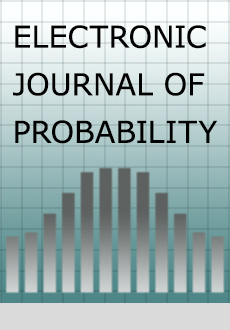Abstract
We show that in a sample of size $n$ from a $\mathsf{GEM} (0,\theta )$ random discrete distribution, the gaps $G_{i:n}:= X_{n-i+1:n} - X_{n-i:n}$ between order statistics $X_{1:n} \le \cdots \le X_{n:n}$ of the sample, with the convention $G_{n:n} := X_{1:n} - 1$, are distributed like the first $n$ terms of an infinite sequence of independent geometric$(i/(i+\theta ))$ variables $G_i$. This extends a known result for the minimum $X_{1:n}$ to other gaps in the range of the sample, and implies that the maximum $X_{n:n}$ has the distribution of $1 + \sum _{i=1}^n G_i$, hence the known result that $X_{n:n}$ grows like $\theta \log (n)$ as $n\to \infty $, with an asymptotically normal distribution. Other consequences include most known formulas for the exact distributions of $\mathsf{GEM} (0,\theta )$ sampling statistics, including the Ewens and Donnelly–Tavaré sampling formulas. For the two-parameter GEM$(\alpha ,\theta )$ distribution we show that the maximal value grows like a random multiple of $n^{\alpha /(1-\alpha )}$ and find the limit distribution of the multiplier.
Citation
Jim Pitman. Yuri Yakubovich. "Extremes and gaps in sampling from a GEM random discrete distribution." Electron. J. Probab. 22 1 - 26, 2017. https://doi.org/10.1214/17-EJP59
Information





